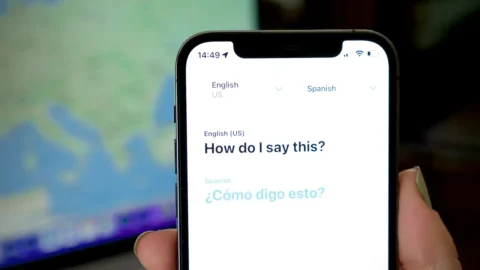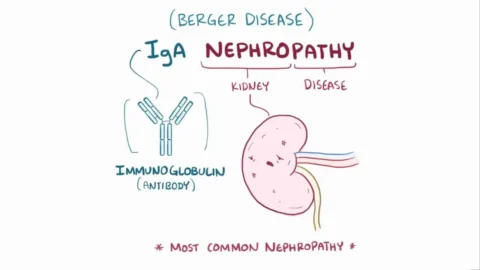Divide Whole Numbers Quiz
Divide Whole Numbers Quiz
Question 1
Quiz Completed!
Welcome to this detailed guide on division in various forms—from dividing whole numbers by fractions to working with mixed numbers and decimals. In this article, we will explore the many facets of division, explain the underlying concepts with plenty of examples, and provide practice problems and teaching tips.
Whether you are a student looking to strengthen your arithmetic skills, a teacher seeking effective lesson plans, or a lifelong learner fascinated by numbers, this guide is designed to cover every aspect of division. We will discuss topics such as:
- Dividing whole numbers by fractions
- Dividing mixed numbers
- Dividing decimals by whole numbers
- Division of fractions and mixed numbers
- Division using unit fractions and reciprocals
- Word problems and real‐world applications
- Worksheets, calculators, and practice tools
Throughout this post, you may notice that many people search for terms like “dividing whole numbers by fractions,” “divide fraction and whole number,” “dividing decimals by whole numbers,” “calculator for dividing fractions and whole numbers,” and many more. We have designed this guide to address all those queries in a single, in‐depth resource.
1. Introduction to Division
Division is one of the four fundamental arithmetic operations. It is the process of splitting a number (the dividend) into equal parts by another number (the divisor). The result is called the quotient. In mathematical notation, division is expressed as:
\( a \div b = q \) or \( \frac{a}{b} = q \)
For example, dividing 20 by 4 is written as:
\( \frac{20}{4} = 5 \)
In this guide, we explore more advanced and varied division topics, including cases where the divisor is a fraction, the dividend is a mixed number, and when decimals come into play. We will discuss the intuition behind dividing by a fraction, examine several methods and strategies, and provide a wealth of examples and practice problems.
Division is not only a basic arithmetic skill but also a crucial concept that appears in more advanced mathematics, from algebra and calculus to real-world applications such as budgeting, measurement, and problem solving. Mastery of division paves the way to understanding proportionality, rates, and many other mathematical ideas.
2. Basic Concepts of Division
At its core, division is the inverse operation of multiplication. If we know that
\( a \times b = c \)
then dividing \( c \) by \( b \) returns \( a \), provided that \( b \neq 0 \):
\( \frac{c}{b} = a \)
This basic relationship is foundational to understanding more complex division scenarios.
Some important properties of division to keep in mind are:
- Non-Commutative: In general, \( a \div b \neq b \div a \).
- Division by One: \( a \div 1 = a \).
- Division by Itself: For any nonzero \( a \), \( a \div a = 1 \).
- Zero Division: Division by zero is undefined.
These properties form the basis for the rules we will use when handling more advanced division operations.
3. Dividing Whole Numbers by Fractions
One of the most common questions is how to divide a whole number by a fraction. The key concept to understand is that dividing by a fraction is the same as multiplying by its reciprocal.
Suppose we want to calculate:
\( a \div \frac{b}{c} \)
The reciprocal of \(\frac{b}{c}\) is \(\frac{c}{b}\). Therefore, the division becomes:
\[ a \div \frac{b}{c} = a \times \frac{c}{b} \]
Example 1: Divide 8 by \(\frac{3}{4}\). First, rewrite 8 as \(\frac{8}{1}\):
\[ \frac{8}{1} \div \frac{3}{4} = \frac{8}{1} \times \frac{4}{3} = \frac{32}{3} \]
The result is an improper fraction, \(\frac{32}{3}\), which can be written as a mixed number:
\( \frac{32}{3} = 10\frac{2}{3} \)
Example 2: Divide 15 by \(\frac{2}{5}\):
\( 15 \div \frac{2}{5} = 15 \times \frac{5}{2} = \frac{75}{2} = 37.5 \)
This method is universal for any whole number divided by a fraction. Converting the whole number to a fraction (by placing it over 1) and then multiplying by the reciprocal of the divisor simplifies the operation considerably.
Many searchers use phrases such as “fraction times whole number” or “multiplication of a whole number and a fraction” when looking for help with these types of problems. Remember: division by a fraction is always converted to multiplication by the reciprocal.
4. Dividing Mixed Numbers
Mixed numbers—numbers that combine a whole number and a fraction—can be tricky when dividing. The best approach is to first convert mixed numbers into improper fractions.
Suppose we want to divide:
\( 3\frac{1}{2} \div 1\frac{3}{4} \)
Step 1: Convert to improper fractions.
\( 3\frac{1}{2} = \frac{3 \times 2 + 1}{2} = \frac{7}{2} \)
\( 1\frac{3}{4} = \frac{1 \times 4 + 3}{4} = \frac{7}{4} \)
Step 2: Rewrite the division as multiplication by the reciprocal.
\[ \frac{7}{2} \div \frac{7}{4} = \frac{7}{2} \times \frac{4}{7} \]
Step 3: Simplify the expression. Notice that 7 cancels out:
\[ \frac{7}{2} \times \frac{4}{7} = \frac{4}{2} = 2 \]
Thus, \( 3\frac{1}{2} \div 1\frac{3}{4} = 2 \).
Converting mixed numbers to improper fractions is a crucial step. After conversion, the problem reduces to dividing one fraction by another, which is done by multiplying by the reciprocal. This process is widely used and appears in many search queries such as “dividing mixed numbers worksheet” and “divide mixed numbers.”
5. Dividing Decimals by Whole Numbers
Dividing decimals by whole numbers follows the same basic process as dividing whole numbers, but with extra care to manage the decimal point. The method involves ignoring the decimal point during the division and then placing it correctly in the quotient.
Example: Divide \( 12.6 \) by \( 3 \).
First, perform the division as if \( 12.6 \) were \( 126 \) (ignoring the decimal):
\( 126 \div 3 = 42 \)
Next, count the number of decimal places in the dividend. Since \( 12.6 \) has one decimal place, the quotient must also have one decimal place. Therefore, \( 42 \) becomes \( 4.2 \).
So, \( 12.6 \div 3 = 4.2 \).
This approach works for any decimal divided by a whole number and is a common topic in searches such as “dividing decimals by whole numbers calculator” and “decimal divide by whole number.”
6. Dividing Fractions and Mixed Numbers Together
Sometimes you will encounter problems that involve both fractions and mixed numbers. The process is to first convert all mixed numbers into improper fractions, and then use the rule for dividing fractions.
Consider the example:
\( \frac{3}{4} \div 2\frac{1}{3} \)
Convert \( 2\frac{1}{3} \) to an improper fraction:
\( 2\frac{1}{3} = \frac{2 \times 3 + 1}{3} = \frac{7}{3} \)
Now, the division becomes:
\[ \frac{3}{4} \div \frac{7}{3} = \frac{3}{4} \times \frac{3}{7} = \frac{9}{28} \]
The result is \( \frac{9}{28} \). This method applies no matter how many fractions or mixed numbers are involved.
Many online resources and calculators are available to help verify these steps, and teachers often use worksheets on “divide fraction and mixed numbers” to reinforce these concepts.
7. Dividing Whole Numbers and Decimals
Division problems sometimes require dividing a whole number by a decimal or vice versa. The method is to adjust the decimal point so that you convert the division into one with whole numbers.
Example 1: Divide \( 50 \) by \( 2.5 \).
Multiply both the dividend and the divisor by 10 (to eliminate the decimal):
\( 50 \times 10 = 500 \) and \( 2.5 \times 10 = 25 \)
Now, perform the division:
\( 500 \div 25 = 20 \)
Therefore, \( 50 \div 2.5 = 20 \).
Example 2: Divide \( 0.75 \) by \( 5 \).
Treat \( 0.75 \) as is (or multiply numerator and denominator by 100 if preferred) and divide:
\( 0.75 \div 5 = 0.15 \)
This method is also reflected in many search phrases like “divide whole number and decimal” and “dividing whole numbers with decimal quotients.”
8. Division Using Unit Fractions and Reciprocals
A unit fraction is a fraction with a numerator of 1, such as \(\frac{1}{n}\). Dividing by a unit fraction is straightforward because the reciprocal of \(\frac{1}{n}\) is simply \( n \).
For instance, dividing a whole number by a unit fraction:
\( 7 \div \frac{1}{4} \)
Rewrite 7 as \(\frac{7}{1}\) and multiply by the reciprocal of \(\frac{1}{4}\) (which is 4):
\[ \frac{7}{1} \times 4 = 28 \]
So, \( 7 \div \frac{1}{4} = 28 \). This technique generalizes to any division involving unit fractions.
Many learners search for “divide a unit fraction by a whole number” or “divide whole numbers by unit fractions calculator” when studying this topic.
9. Dividing Whole Numbers by 10, 100, and 1000
Dividing by powers of 10 is one of the simplest operations in arithmetic. When you divide a number by 10, 100, or 1000, you simply shift the decimal point to the left.
For example:
\( 456 \div 10 = 45.6 \)
\( 456 \div 100 = 4.56 \)
\( 456 \div 1000 = 0.456 \)
This concept is widely used in real-life applications, such as currency conversion and scaling measurements. Searches like “divide whole numbers by 10 100 and 1000” are common.
10. Division Word Problems and Real-World Applications
Word problems help illustrate how division is used in everyday situations. Below are several examples that demonstrate the practical use of dividing whole numbers by fractions, decimals, and other numbers.
Example 1: Recipe Adjustment
Suppose a recipe requires \(\frac{3}{4}\) cup of oil for one batch, but you want to make only half a batch. How much oil do you need?
You calculate:
\[ \frac{3}{4} \div 2 = \frac{3}{4} \times \frac{1}{2} = \frac{3}{8} \]
So, you need \(\frac{3}{8}\) cup of oil.
Example 2: Distributing Items
A teacher wants to distribute \(\frac{5}{6}\) of a cake equally among 4 students. How much cake does each student get?
First, divide the fraction by 4:
\[ \frac{5}{6} \div 4 = \frac{5}{6} \times \frac{1}{4} = \frac{5}{24} \]
Each student receives \(\frac{5}{24}\) of the cake.
Example 3: Business Applications
A company produces 480 items and wants to package them in boxes that hold \(\frac{2}{3}\) of an item each (for example, a sample package). How many boxes can be filled?
To find out, divide 480 by \(\frac{2}{3}\):
\[ 480 \div \frac{2}{3} = 480 \times \frac{3}{2} = 720 \]
The company can fill 720 boxes.
These real-world examples show that division is more than an abstract concept—it is a critical tool for solving everyday problems.
11. Worksheets and Practice Problems
Consistent practice is essential to master division, whether it is dividing whole numbers by fractions, mixed numbers, or decimals. Below are several practice problems that you can use for self-study or in the classroom:
Practice Problem Set 1: Dividing Whole Numbers by Fractions
- \( 10 \div \frac{3}{5} \) Hint: Rewrite 10 as \(\frac{10}{1}\) and multiply by the reciprocal of \(\frac{3}{5}\).
- \( 7 \div \frac{2}{3} \)
- \( 15 \div \frac{4}{7} \)
Practice Problem Set 2: Dividing Mixed Numbers
- \( 4\frac{1}{2} \div 2\frac{2}{3} \)
- \( 5\frac{3}{4} \div 1\frac{1}{2} \)
Practice Problem Set 3: Dividing Decimals by Whole Numbers
- \( 18.9 \div 3 \)
- \( 7.25 \div 5 \)
Practice Problem Set 4: Word Problems
- A runner covers \( 12.6 \) kilometers in 2 hours. What is the runner's average speed in kilometers per hour? Solution: \( 12.6 \div 2 = 6.3 \) km/h.
- A baker uses \(\frac{3}{4}\) cup of sugar for one batch of cookies. If the baker makes 8 batches, how many cups of sugar are used in total? Solution: \( 8 \times \frac{3}{4} = \frac{24}{4} = 6 \) cups.
You can print these problems as worksheets or use an online calculator to check your work. Many teachers and students search for “dividing fractions and whole numbers worksheet” and “calculator for dividing mixed numbers” to supplement their practice.
12. Advanced Division Techniques
After mastering the basic methods, you can explore more advanced division techniques. These methods help in dealing with large numbers, decimals, and mixed expressions quickly and accurately.
Technique 1: Using the Inverse Operation
Remember that division is the inverse of multiplication. This relationship allows you to check your work by multiplying the quotient by the divisor to see if you recover the dividend:
If \( a \div b = q \), then \( q \times b = a \). In MathJax:
\[ q \times b = a \]
Technique 2: Estimation and Rounding
Estimation is key when dealing with large numbers. Round the numbers to the nearest ten or hundred, perform the division, and then adjust your answer. This technique is particularly useful when dividing multi-digit numbers by one-digit numbers.
Technique 3: Breaking Down Complex Problems
When faced with a complex problem—such as dividing a large decimal by a small whole number—break the problem into simpler parts. For example, to divide \( 125.76 \) by \( 4 \), you might separate the whole number part and the decimal part:
\[ 125.76 = 125 + 0.76 \]
Then divide each part separately:
\( 125 \div 4 = 31.25 \) (with remainder) and \( 0.76 \div 4 \approx 0.19 \), then sum the parts for the final quotient.
Advanced calculators and worksheets on “dividing multi digit numbers” or “dividing decimals by whole numbers lesson 5.2” are available online for additional practice.
13. Common Mistakes in Division and How to Avoid Them
Even experienced learners can make errors in division. Here are some common mistakes and tips on how to avoid them:
- Miscalculating the Reciprocal: When dividing by a fraction, be sure to multiply by the correct reciprocal. For example, the reciprocal of \(\frac{3}{5}\) is \(\frac{5}{3}\), not \(\frac{3}{5}\).
- Misplacing the Decimal Point: In decimal division, failing to correctly count the number of decimal places leads to inaccurate results. Always adjust the quotient according to the total number of decimal places in the dividend.
- Forgetting to Convert Mixed Numbers: When dividing mixed numbers, always convert them to improper fractions first.
- Improper Alignment in Long Division: When using the long division algorithm, ensure that numbers are aligned correctly to avoid calculation errors.
- Division by Zero: Always remember that dividing by zero is undefined.
By carefully reviewing your steps and practicing with worksheets, you can avoid these pitfalls and improve your accuracy.
14. Teaching Tips and Resources for Division
Educators and parents play an important role in helping students master division. Here are some strategies and resources to facilitate learning:
- Interactive Whiteboard Activities: Use visual models to demonstrate division as the inverse of multiplication.
- Worksheets and Practice Drills: There are many free printable worksheets available for “dividing whole numbers,” “dividing fractions and mixed numbers worksheets,” and “dividing decimals by whole numbers.”
- Online Calculators and Apps: Use digital tools such as calculators for dividing fractions, mixed numbers, and decimals to check work and provide step-by-step explanations.
- Group Work and Games: Encourage students to work together to solve division word problems and to play multiplication/division games.
- Real-World Applications: Show students how division is used in budgeting, cooking, and science to make the topic more relevant.
Many search terms—such as “calculator for dividing fractions and whole numbers” or “divide mixed numbers worksheet”—reflect the need for interactive and engaging materials. Combining these tools with traditional teaching methods can greatly enhance student learning.
15. Frequently Asked Questions (FAQs)
-
How do I divide a whole number by a fraction?
Simply multiply the whole number by the reciprocal of the fraction. For example:
\[ 12 \div \frac{3}{4} = 12 \times \frac{4}{3} = 16 \]
-
What is the correct method to divide mixed numbers?
Convert each mixed number to an improper fraction and then divide by multiplying by the reciprocal.
-
How can I divide a decimal by a whole number?
Perform the division as if the decimal were an integer, then adjust the decimal point in the answer according to the number of decimal places in the dividend.
-
What common mistakes should I avoid?
Be careful not to misplace the decimal point, always convert mixed numbers first, and ensure you use the correct reciprocal when dividing by a fraction.
-
Are there any online calculators for these operations?
Yes, many websites offer calculators for dividing fractions, mixed numbers, and decimals. Simply search for “divide fraction by whole number calculator” or “dividing mixed numbers calculator.”
16. Summary and Conclusion
In this comprehensive guide, we have covered a wide range of topics related to division—from the fundamental concepts of division to specific techniques for dividing whole numbers by fractions, mixed numbers, and decimals. We explored the method of multiplying by the reciprocal, converting mixed numbers to improper fractions, handling decimals, and applying division in real-world scenarios.
Whether you are practicing on your own or teaching others, it is essential to build a strong foundation in these skills. Consistent practice with worksheets, interactive tools, and real-life problems will help solidify your understanding and ensure fluency in division.
We hope this guide has provided you with the clarity and practice you need to master division in all its forms. Keep exploring, practicing, and applying these techniques to become confident in your arithmetic skills.
Happy dividing!



